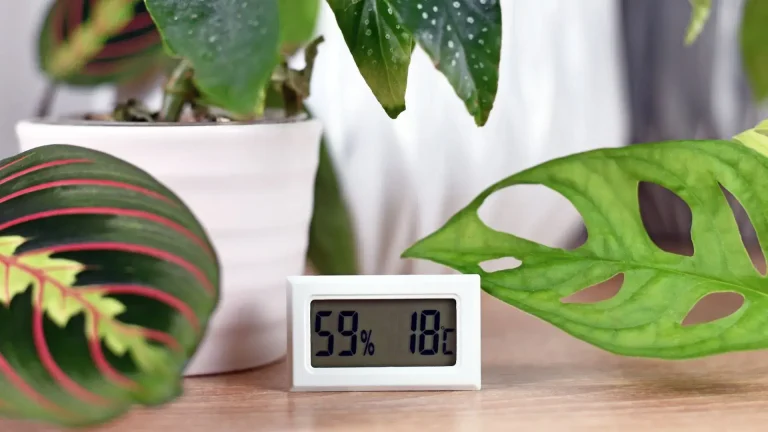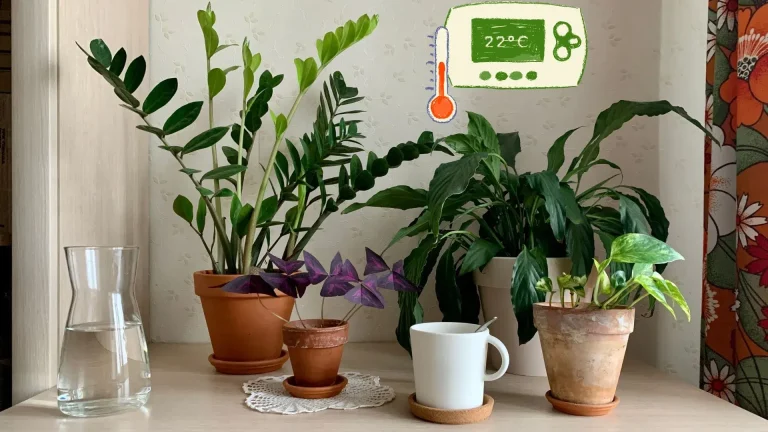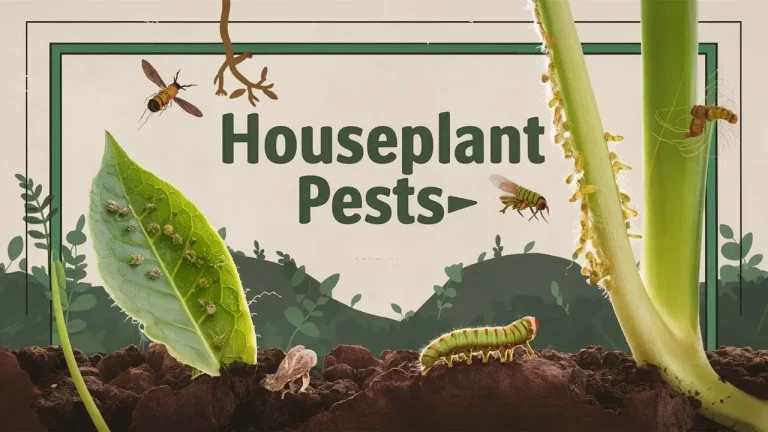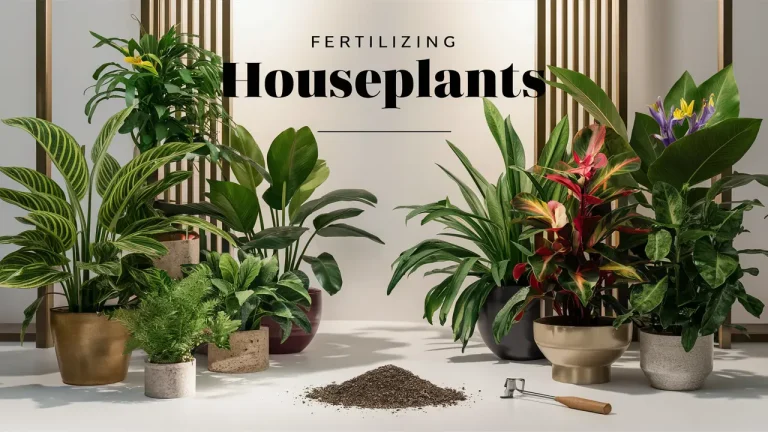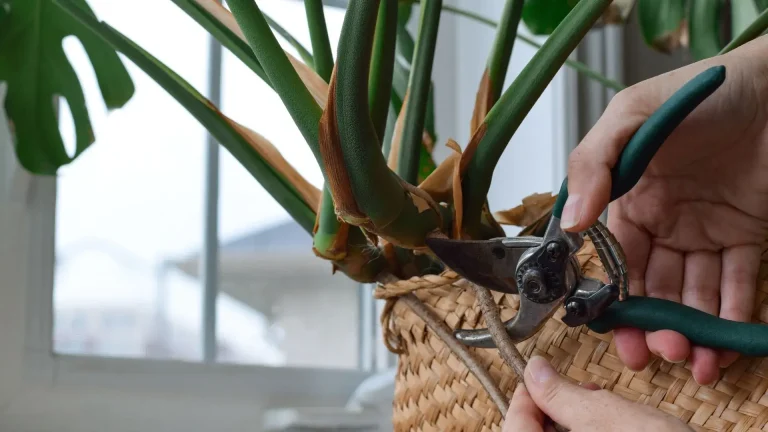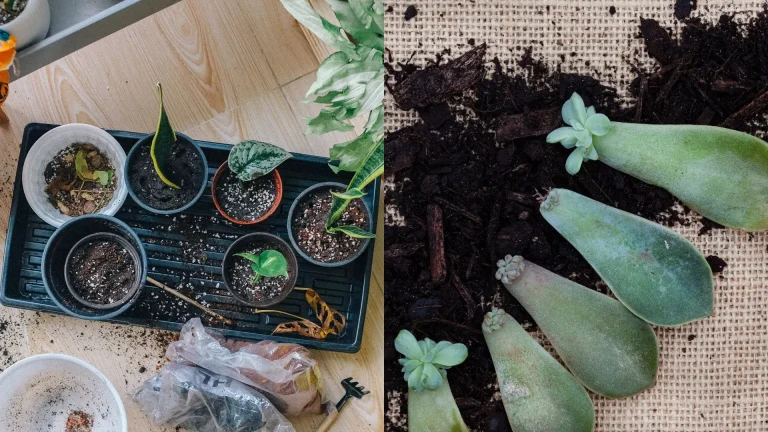Houseplant Watering Guide – Things Every Plant Parent Should Know
This guide provides a comprehensive overview of houseplant watering, emphasizing the importance of proper hydration for plant health. Understanding how to effectively water your plants can prevent common issues, promote growth, and enhance the overall beauty of your indoor garden.
Whether you’re a novice or an experienced plant parent, this article will equip you with the knowledge needed to meet your plants’ unique watering needs.
Table of Contents
Why Proper Watering is Essential for Plant Health 🔑
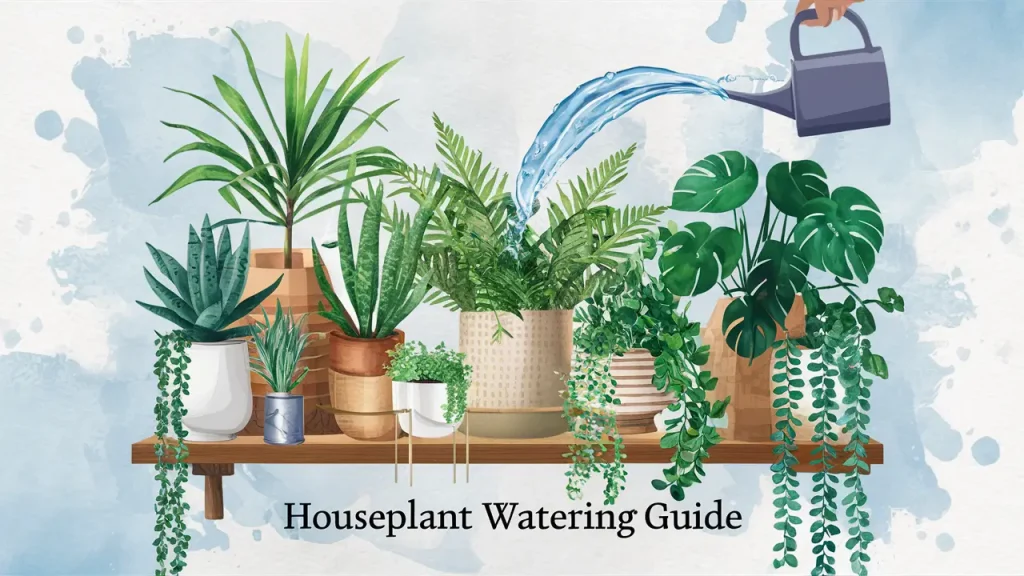
Plants rely on water for essential processes like nutrient absorption, photosynthesis, and maintaining cell structure. Without adequate hydration, a plant’s ability to thrive diminishes, and it becomes susceptible to stress, diseases, and pests.
Proper watering isn’t just about pouring water into the pot—it’s about understanding your plant’s unique needs and providing hydration in a way that promotes long-term health.
Learning the art of watering is one of the most rewarding steps in plant care. By mastering proper watering techniques, you can:
- Prevent common issues like root rot, yellowing leaves, and stunted growth.
- Ensure your plants flourish with lush foliage and vibrant blooms.
- Save time, water, and effort with efficient methods tailored to your plants’ requirements.
Whether you’re new to houseplants or a seasoned enthusiast, understanding how and when to water is the cornerstone of successful plant parenting.
Factors Affecting Plant Watering Needs 💧
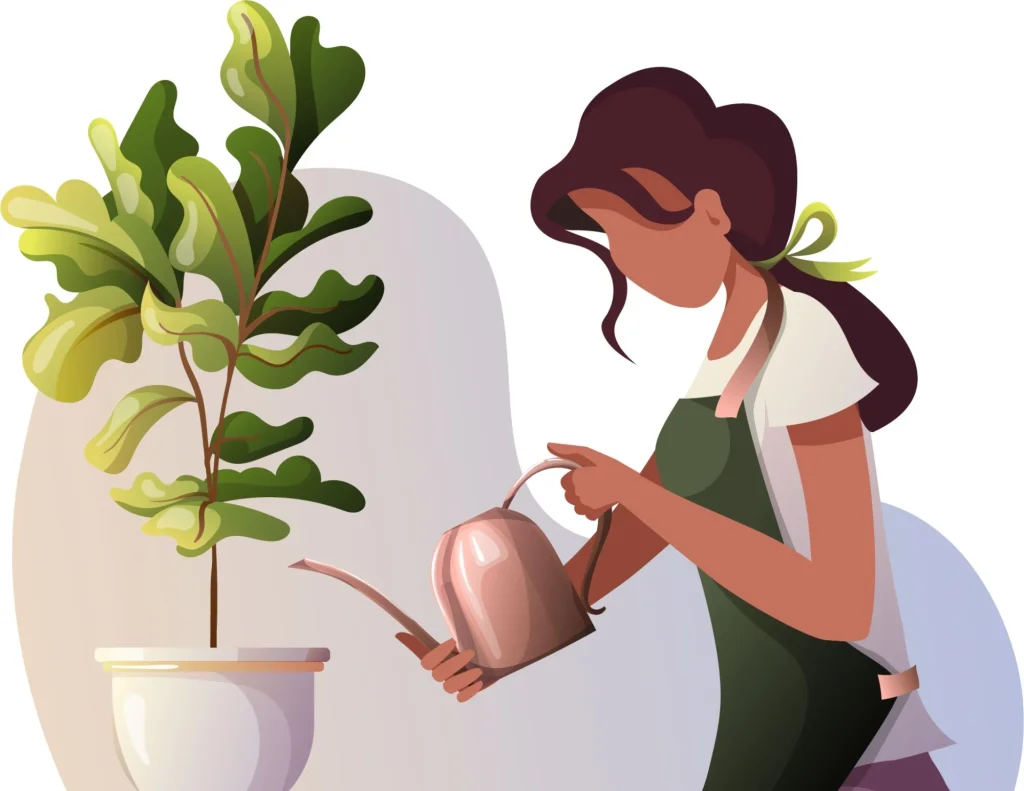
👉 Plant Type and Size
Different plants have varying water requirements based on their natural habitats. For example:
- Tropical plants like ferns and peace lilies thrive in consistently moist soil.
- Succulents and cacti prefer dry conditions and infrequent watering.
- Larger plants with extensive root systems generally need more water than smaller plants.
👉 Pot Size and Material
- Pot Size: Larger pots hold more soil, which retains water longer, while smaller pots dry out more quickly.
- Material: Terracotta pots are porous, allowing water to evaporate faster, making them ideal for plants that prefer drier conditions. On the other hand, plastic and ceramic pots retain moisture longer, suiting water-loving plants.
👉 Soil Composition
The type of soil also plays a critical role. Well-draining soils prevent waterlogging and root rot, while soils rich in organic matter retain more moisture. Adjust the soil mix to suit your plant’s preferences—for example, sandy mixes for succulents and loamy mixes for tropical plants.
👉 Environmental Factors: Light, Temperature, and Humidity
- Light: Bright, direct light causes the soil to dry faster, increasing the need for frequent watering. Low-light plants in shaded spots will require less water.
- Temperature: Warm environments speed up evaporation, while cooler conditions slow it down.
- Humidity: High humidity reduces water loss, while dry air, especially in winter with indoor heating, demands more frequent watering.
👉 Seasonal Changes and Their Impact on Watering
Plants grow actively in spring and summer, consuming more water, while their needs reduce during the dormant fall and winter months. Adjust your watering schedule accordingly, and be cautious of overwatering during periods of slow growth.
Different Types of Plants and Their Watering Needs 🪴
👉 Tropical Plants (e.g., Ferns, Calatheas)
Tropical plants thrive in consistently moist soil and high humidity. They originate from rainforests, so mimic these conditions by watering regularly, but avoid letting the soil become soggy. Keep an eye on the soil’s surface; it should feel slightly damp but not overly wet. Examples include ferns, calatheas, and peace lilies.
👉 Succulents and Cacti
Succulents and cacti are drought-tolerant plants that store water in their leaves or stems. Water sparingly, allowing the soil to dry out completely between waterings. During their dormant winter period, watering may only be necessary once every few weeks.
👉 Flowering Plants
Plants that bloom, such as orchids, African violets, and begonias, often require more water during their flowering phase. Ensure the soil stays slightly moist but drains well, as too much water can lead to root rot and hinder blooming.
👉 Foliage Plants
Non-flowering foliage plants like pothos, philodendrons, and snake plants typically need moderate watering. Water when the top inch of soil feels dry, adjusting based on the light and humidity levels in their environment.
👉 Plants in Dormant Phases
Many plants enter a dormant phase during colder months, reducing their growth rate. During this time, water sparingly, as the plants require less moisture. Be careful to avoid overwatering, which can harm their roots.
How to Determine When to Water ⏱️
👉 Visual and Tactile Soil Checks
- Observe the Soil’s Surface: Dry, cracked soil indicates it’s time to water.
- Insert Your Finger: Push your finger 1-2 inches into the soil. If it feels dry, the plant likely needs water.
👉 Using a Moisture Meter
A moisture meter provides an accurate reading of the soil’s moisture level. Insert the probe into the soil near the roots to determine whether it’s time to water. This is especially helpful for beginners or plants in pots without drainage holes. Most plants thrive when the meter shows mid-range moisture levels.
👉 Observing Plant Behavior and Signs of Thirst
- Thirsty Plants: Look for wilting, drooping, or curling leaves as common signs of dehydration.
- Overwatered Plants: Yellowing leaves and mushy stems may indicate excessive water. Pay attention to changes in your plant’s appearance to fine-tune your watering routine.
How Much to Water 💧
👉 General Guidelines for Water Quantity
Water until you see excess draining from the bottom of the pot. This ensures the roots receive adequate hydration while flushing out excess salts and minerals.
👉 Adjusting Based on Plant Type and Pot Drainage
- Well-Draining Pots: Plants in pots with drainage holes can be watered more generously.
- Pots Without Drainage: Water sparingly and track soil moisture carefully to prevent overwatering. Tropical plants may require consistent, smaller water amounts, while succulents thrive with infrequent, deeper watering.
👉 Avoiding Waterlogging and Dry Root Zones
Ensure the soil is evenly moistened, avoiding water pooling at the base or dry patches. Use a soil mix suited to your plant type to maintain proper drainage and aeration.
Types and Quality of Water 🚰
Tap Water
Readily available and convenient, but may contain chlorine, fluoride, or salts that can build up in the soil and harm sensitive plants. Let tap water sit out for 24-48 hours to allow chemicals to dissipate, or use a water conditioner.
Rainwater
Natural, chemical-free, and rich in beneficial minerals. Set up a rain barrel or use buckets to collect water during rainfall. Filter it if needed to remove debris.
Distilled Water
Free from impurities, making it ideal for sensitive plants like orchids.
Filtered Water
Removes harmful minerals while retaining beneficial nutrients, making it a balanced choice for most plants.
Hard Water and Its Impact on Plants
Hard water contains high levels of calcium and magnesium, which can leave deposits in the soil, affecting plant health over time. Use filtered or distilled water for plants that are particularly sensitive to mineral buildup.
Watering Supplies 🛠️
👉 Essential Tools
- Watering Cans: A good watering can with a narrow spout provides controlled flow, allowing you to target the soil without splashing water on the leaves, minimizing the risk of fungal issues.
- Moisture Meters: Handy devices that measure the moisture level in the soil, helping you determine when to water.
- Trays: Catch trays placed under pots collect excess water during watering, preventing messes and protecting surfaces.
👉 Advanced Tools
- Self-Watering Systems: Use reservoirs to provide consistent moisture to the roots, reducing the frequency of watering and helping avoid over- or underwatering.
- Humidity Trays: Filled with water and pebbles, these create a humid microenvironment around plants, perfect for tropical species.
Watering Methods 💧
👉 Top Watering
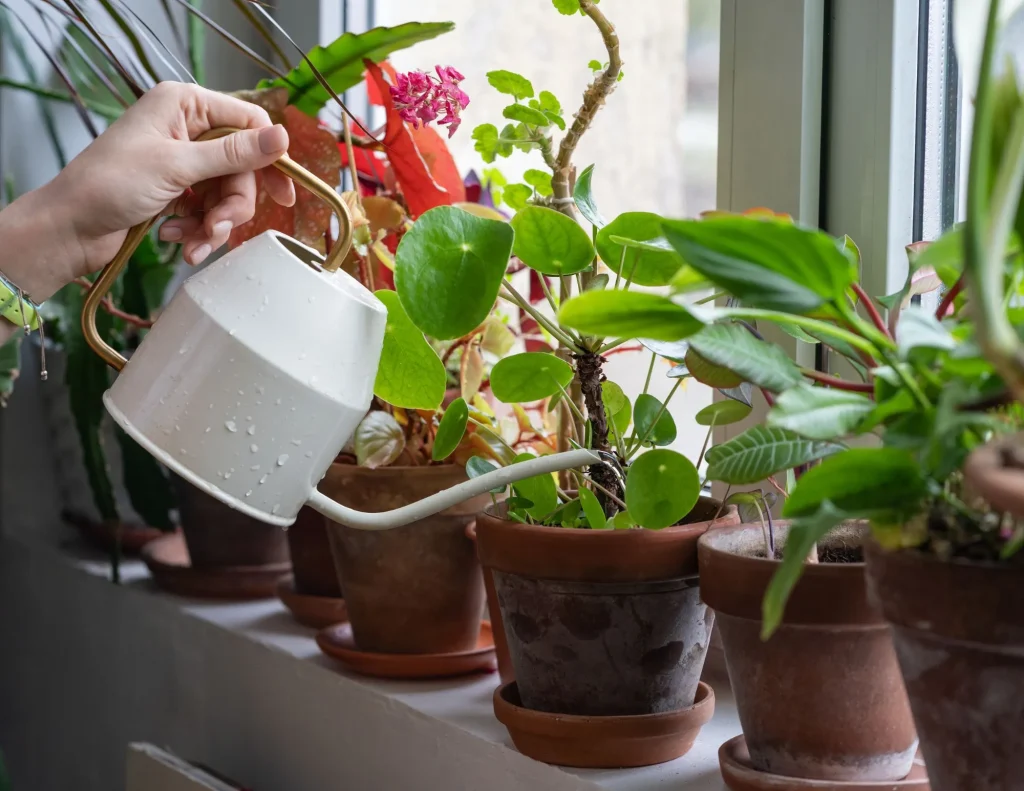
Use a watering can to pour water slowly at the base of the plant until excess drains from the bottom. Rotate the pot occasionally to ensure even water distribution.
- Pros: Easy to perform and ideal for evenly saturating the soil.
- Cons: May compact the soil over time if not done gently; risk of water pooling on leaves.
👉 Bottom Watering
Place the pot in a shallow tray or basin filled with water. Let the plant sit for 20–30 minutes, allowing the soil to absorb moisture through the drainage holes. Ideal for plants prone to root rot or when the topsoil tends to stay too wet.
👉 Misting
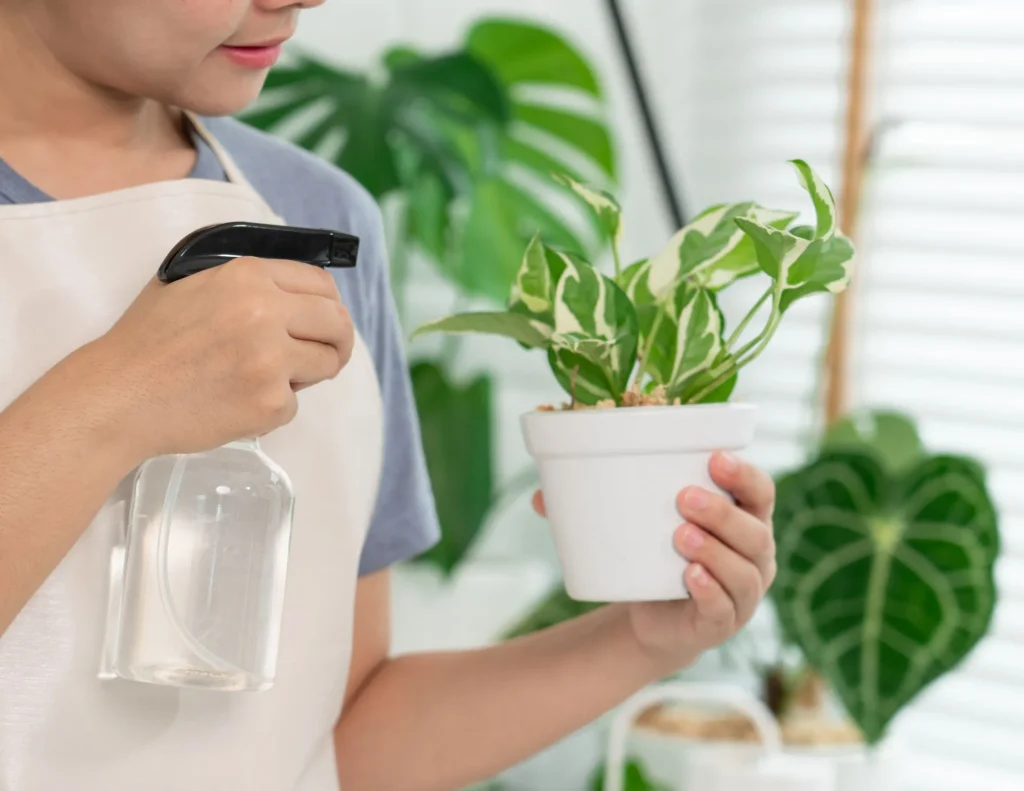
Use a fine mist spray bottle to lightly spritz the foliage, avoiding over-saturation. Mist early in the day to allow the leaves to dry before nighttime.
Benefits: Increases localized humidity for plants and helps keep leaves clean.
👉 Self-Watering Pots
These pots have built-in reservoirs that wick water into the soil as needed. Fill the reservoir according to the manufacturer’s instructions and monitor water levels regularly.
Maintenance Tips:
- Clean the reservoir periodically to prevent algae growth.
- Check the soil to ensure the wicking system is functioning properly.
Best Time to Water ⏱️
👉 Morning Watering
Watering in the morning is ideal because plants can absorb moisture before the day’s heat sets in. This timing also allows the foliage to dry quickly, reducing the risk of fungal diseases.
👉 Evening Watering
While evening watering is not harmful, prolonged moisture on leaves or soil overnight can create conditions for fungal growth. Use this option sparingly and ensure no water sits on the foliage.
👉 Avoiding Midday Watering During Heatwaves
Watering during the hottest part of the day can lead to rapid evaporation, reducing the effectiveness of hydration. Additionally, water droplets on leaves may act as magnifying lenses, potentially scorching them. Reserve watering for the early morning or late afternoon during heatwaves.
Seasonal Watering Tips 🌦️
Plants aren’t static—they adapt to the seasons just like we do. As temperatures, light levels, and humidity change throughout the year, so do your plants’ water needs. Here’s how to adjust your watering routine for each season to keep your plants thriving year-round.
👉 Spring: A Time for Growth
As the days grow longer and warmer, most houseplants begin their active growth phase. This means they’ll need more water to fuel their development.
- What to do:
- Gradually increase watering frequency as new growth appears.
- Check soil moisture more often, especially for plants near sunny windows.
- Pro Tip: Spring is also a great time to repot plants. After repotting, give them a thorough watering to help them settle into their new home.
👉 Summer: Staying Hydrated in the Heat
Summer’s heat and increased sunlight can dry out soil more quickly. Many plants will need watering more frequently during this season.
- What to do:
- Water deeply and consistently, especially for plants in bright, sunny spots.
- Monitor plants daily if temperatures are high or if humidity is very low.
- Pro Tip: Consider grouping humidity-loving plants together or running a humidifier to prevent moisture loss.
👉 Autumn: Slowing Down
As the temperature cools and light levels drop, most houseplants naturally slow their growth. This means their water requirements also decrease.
- What to do:
- Begin reducing watering frequency as plants enter dormancy.
- Avoid overwatering, as cooler soil takes longer to dry out.
- Pro Tip: Keep an eye on tropical plants, which may continue growing indoors if they receive consistent light.
👉 Winter: A Period of Rest
During winter, most houseplants are in a dormant phase, requiring far less water. Overwatering during this time is a common mistake.
- What to do:
- Allow the top 2-3 inches of soil to dry out before watering.
- Water only once every 2-4 weeks for dormant plants like succulents and cacti.
- Pro Tip: Be mindful of central heating, which can dry out the air. Use a humidifier or pebble tray to maintain a balanced environment for moisture-loving plants.
Common Mistakes to Avoid 🚩
Even with the best intentions, watering mistakes happen. Recognizing and avoiding these pitfalls can save your plants from unnecessary stress.
👉 Overwatering
- What happens: Too much water suffocates roots, leading to yellowing leaves, mushy stems, and root rot.
- How to prevent it: Always check the soil before watering, and ensure pots have adequate drainage.
👉 Underwatering
- What happens: Plants deprived of water will wilt, develop crispy edges, and shed leaves.
- How to prevent it: Stick to a regular watering routine, and double-check soil moisture levels.
👉 Using Hard or Soft Water
How to prevent it: Use filtered or distilled water for sensitive plants, or let tap water sit out overnight to reduce chlorine and other additives.
What happens: Hard water can leave salt deposits in the soil, while soft water often lacks essential minerals.
👉 Dealing with Root Rot and Mineral Buildup
Root Rot: Often caused by overwatering or poor drainage.
Solution: Trim away affected roots, repot in fresh, well-draining soil, and reduce watering frequency.
Mineral Buildup: White crust on the soil or pot edges, caused by salts in water or fertilizer.
Solution: Flush the soil with distilled water to wash away salts or repot with fresh soil.
👉 Recognizing Symptoms of Improper Watering
- Wilting despite moist soil: Indicates root rot.
- Brown leaf tips: May signal inconsistent watering or poor humidity.
- Stunted growth: Could result from underwatering or lack of nutrients carried by water.
👉 Common Errors
- Using pots without drainage holes, leading to water accumulation.
- Watering on a rigid schedule without considering soil moisture.
- Overwatering after a period of drought, shocking the plant.
Solutions for Forgetful Waterers ❤️
👉 Setting Reminders and Schedules
Create a watering schedule based on your plants’ needs, using alarms or calendar notifications. Assign specific days for checking moisture levels and watering as necessary.
✅ Grab my printable plant care tracker to monitor watering, light, and more!
👉 Using Technology Like Plant Care Apps
Apps like Planta, Florish, or Gardenate can send reminders and track each plant’s watering needs. Some apps include additional features like care tips and troubleshooting guides.
👉 Employing Self-Watering Pots and Reservoirs
Self-watering systems are excellent for forgetful plant owners, ensuring consistent hydration. Consider grouping plants with similar water needs near a self-watering setup to streamline care.
Final Thoughts ✍️
Proper watering requires understanding your plant’s specific needs, environmental conditions, and soil characteristics. Employ the right tools and techniques to balance hydration effectively. Every plant is unique; observing and adjusting your methods as needed is the key to success. Don’t fear making mistakes—they are opportunities to learn and grow as a plant parent.
- Always check soil moisture before watering.
- Use appropriate tools like moisture meters and self-watering pots for ease.
- Stay attentive to your plants’ signals and enjoy the process of caring for your green companions.
With these insights, you’re well-equipped to master the art of watering and keep your houseplants thriving! 🌱

